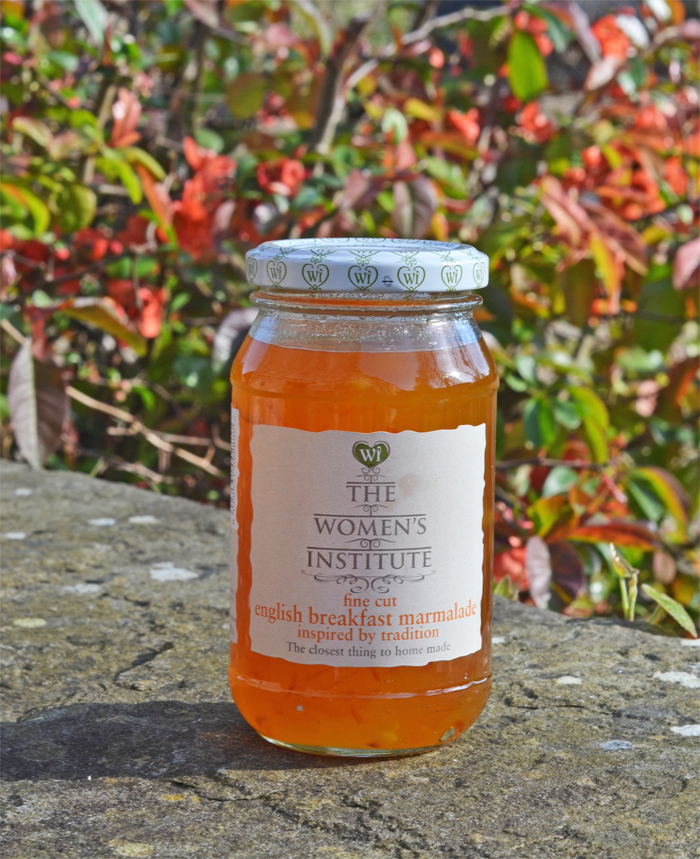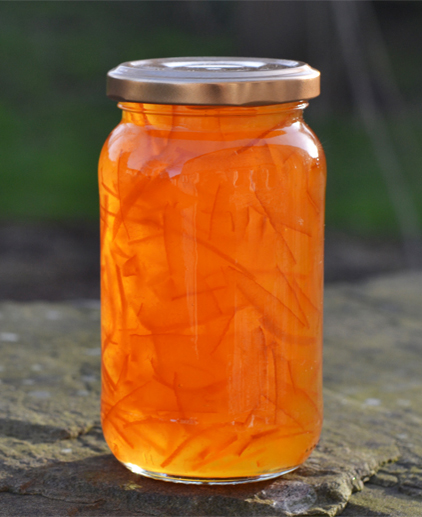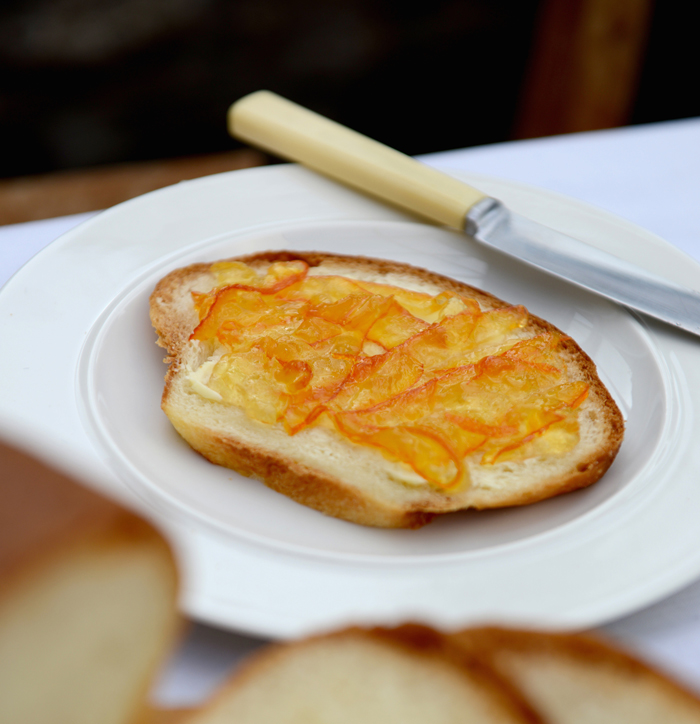In 2017 the Women’s Institute came under fire once again in the media, this time for their marmalade, described by Chris Smyth, then Health Editor of The Times as ” the sugariest in the country.” Women’s Institute Fine Cut English Breakfast Marmalade topped a survey of sweet spreads with 71g sugar per 100g of marmalade. The survey claimed a 20g serving of this marmalade, sold in Waitrose stores equates to eating 14g of sugar.
described by Chris Smyth, then Health Editor of The Times as ” the sugariest in the country.” Women’s Institute Fine Cut English Breakfast Marmalade topped a survey of sweet spreads with 71g sugar per 100g of marmalade. The survey claimed a 20g serving of this marmalade, sold in Waitrose stores equates to eating 14g of sugar.
The recommended daily allowance of sugar is 24g for children and 30g for adults. Whilst the nutritional information on the jar lists 71g sugar per 100g, a separate sentence elsewhere on the label advises the consumer “Prepared with 40g fruit per 100g. Total sugar content 68g per 100g”, no need to worry about this apparently conflicting information, these statements can all be correct.
Real marmalades are a mixture of cooked citrus fruit and sugar. The quality of marmalade is determined by the proportions of sugar, pectin and acid in the preserve. With a total sugar content of at least 60%, the colours of marmalades are bright and characteristic of the fruit used in the recipe. The consistency is gelled and any peel in the marmalade is evenly spread and tender.
Total sugar content is the percentage by weight of sugar in the marmalade as a proportion of the yield, i.e. the weight of finished marmalade. In their Guidance Notes for “The Jam and Similar Products Regulations 2003,” The Food Standards Agency states “ The Regulations require as a general rule that jam, extra jam, jelly, extra jelly. marmalade, jelly marmalade and sweetened chestnut purée have a sugars content of at least 60%.”
The Seville orange marmalade recipe I use, one championed by the Women’s Institute since the 1930’s uses 1.4kg sugar and 675g Seville oranges plus the juice of a lemon and yields 2.25kg of Marmalade. So it has a sugar content of around (1.4kg sugar/2.25kg yield) or 62% from the sugar in the recipe. Add to that the natural sugar in the fruit, in the order of 5%, the overall total will be around 65%.
In fact as preserves include fruit which varies in sugar content, even from the same tree, the labelling regulations sensibly permit a considerable margin of error for the figures shown on the label. So sugar content of 68% or even 71% as stated on the WI label can be “correct” even though the measured sugar content is only 67%.
 As Seville oranges are naturally high in pectin they will “set” a higher, usually double the amount of sugar to fruit, without requiring much of the fruit’s juices to be boiled off (The fruit and sugar in the recipe is just about equal to the yield). In contrast many of the reduced sugar recipes involve yields which are less than the total weight of fruit and sugar, which means that part of the fruit juice is boiled off and some of the natural fruit flavour is lost. Bearing in mind the bitter flavour of Seville oranges the double amount of sugar makes a balanced flavoured marmalade and not an overly sweet one.
As Seville oranges are naturally high in pectin they will “set” a higher, usually double the amount of sugar to fruit, without requiring much of the fruit’s juices to be boiled off (The fruit and sugar in the recipe is just about equal to the yield). In contrast many of the reduced sugar recipes involve yields which are less than the total weight of fruit and sugar, which means that part of the fruit juice is boiled off and some of the natural fruit flavour is lost. Bearing in mind the bitter flavour of Seville oranges the double amount of sugar makes a balanced flavoured marmalade and not an overly sweet one.
In recent years, some authors of books about preserving claim their recipes use less sugar to improve the fruit flavour and reduce the sweetness of the preserve, offering a healthier product. However, although the weight of sugar has been reduced in the ingredients list, without the correct amount of sugar, ( which is the preservative) the marmalade has to be boiled for longer to reach setting point (104.5 F) to get a set, which results in a lower yield and a higher sugar content than might generally be expected.
Blood Orange Marmalade 2.25kg blood oranges, 100ml lemon juice 1kg sugar, yield of Marmalade 1.25kg, which means that the sugar content is around 1/1.25 or 80% !
Seville Orange Marmalade 675g Seville oranges, 1kg sugar yield 1.35kg , which means that the sugar content is around (1/1.35) 75% !
Seville Orange Marmalade 500g Seville oranges, 850g sugar yield 1kg, which means that the sugar content is around (850/1000) 85% !
Bergamot Marmalade 900g Bergamots 2 lemons 900g sugar yield 1kg, which means that the sugar content is around (900/1000) 90% !
 By reducing the percentages of total sugar content, the characteristic gel in the consistency is lost and the marmalade may ferment, unless other ingredients are added to preserve it, the result will also affect the true fruit flavour.
By reducing the percentages of total sugar content, the characteristic gel in the consistency is lost and the marmalade may ferment, unless other ingredients are added to preserve it, the result will also affect the true fruit flavour.
My Award winning Marmalade
